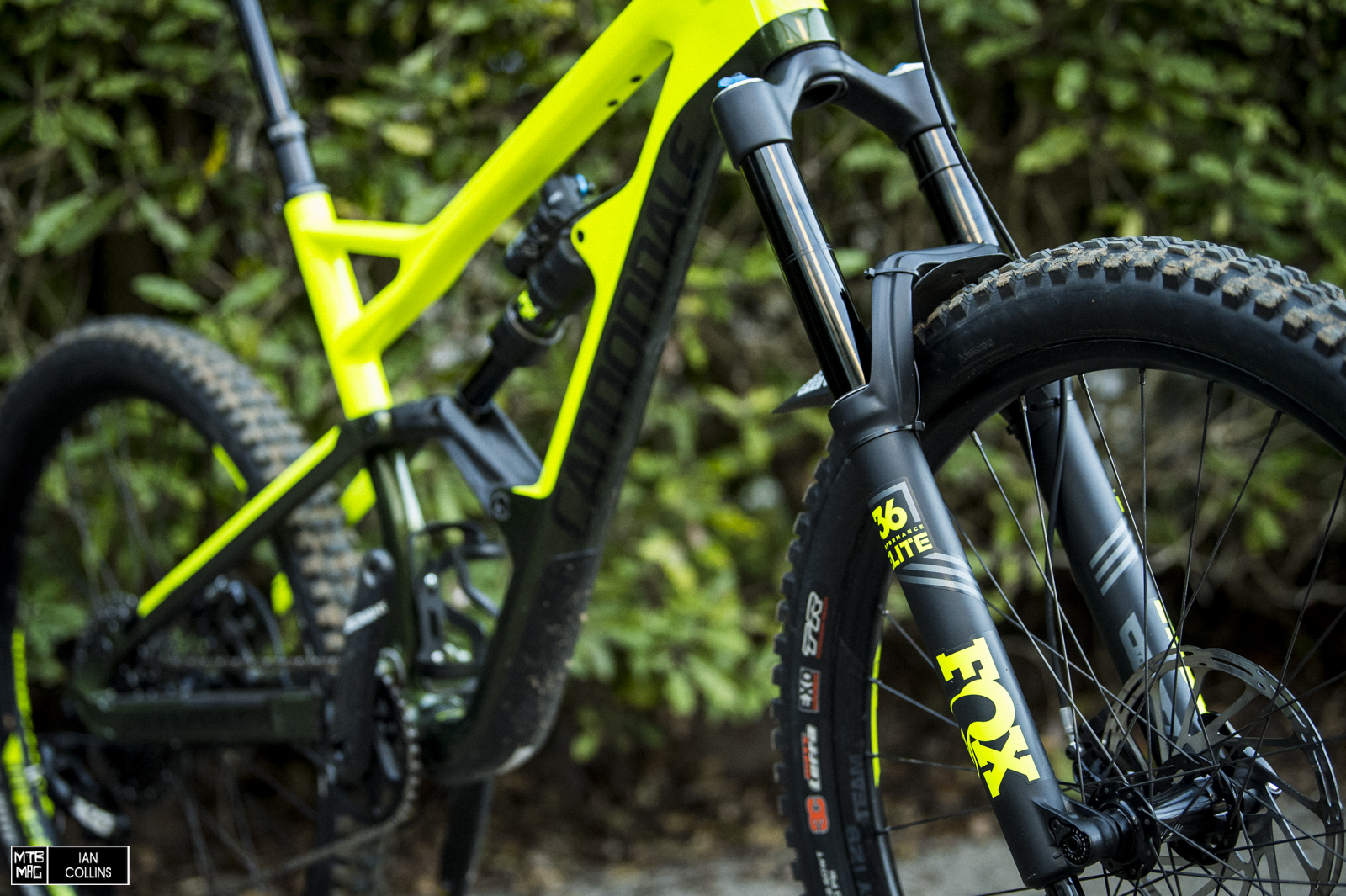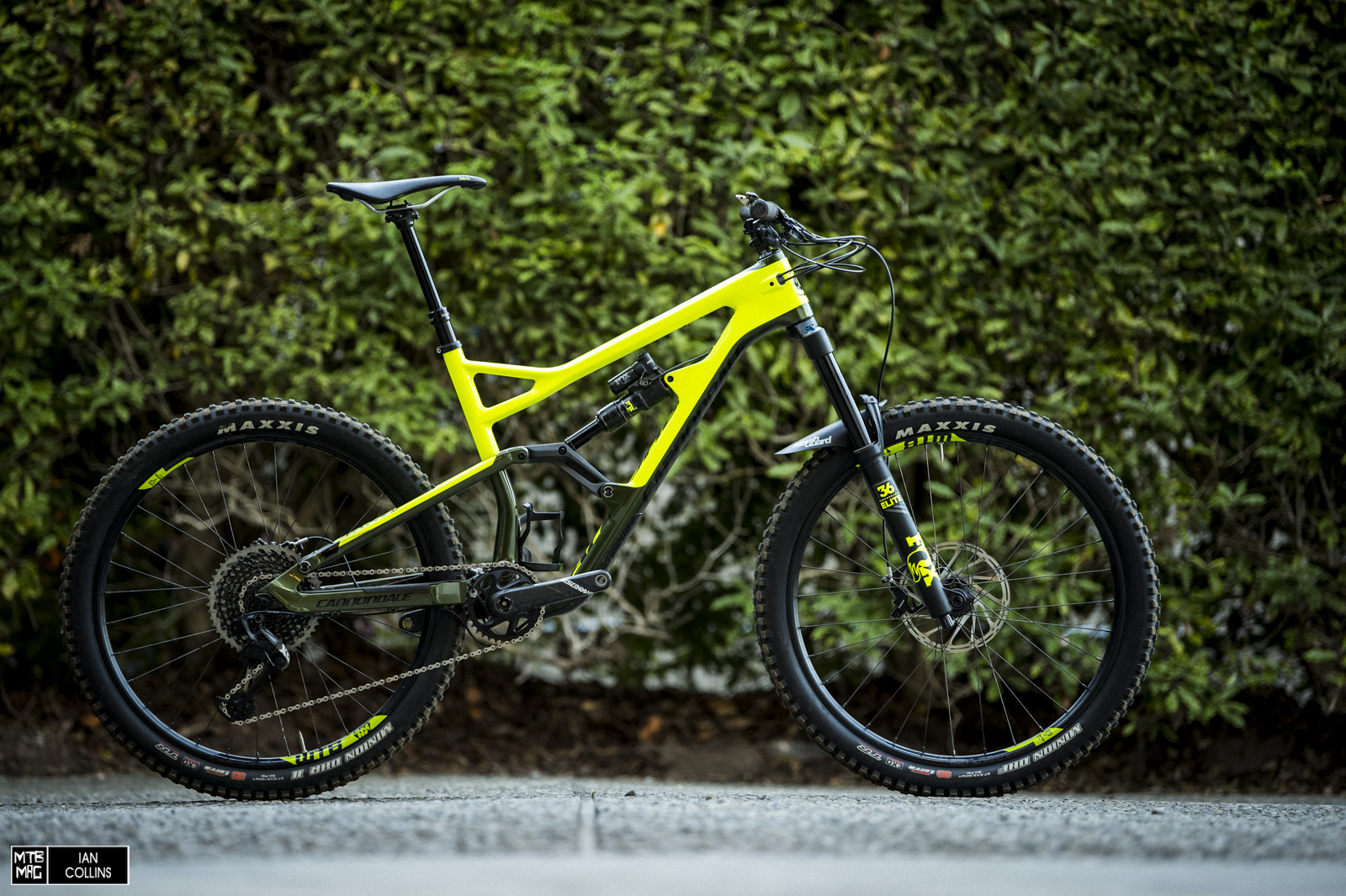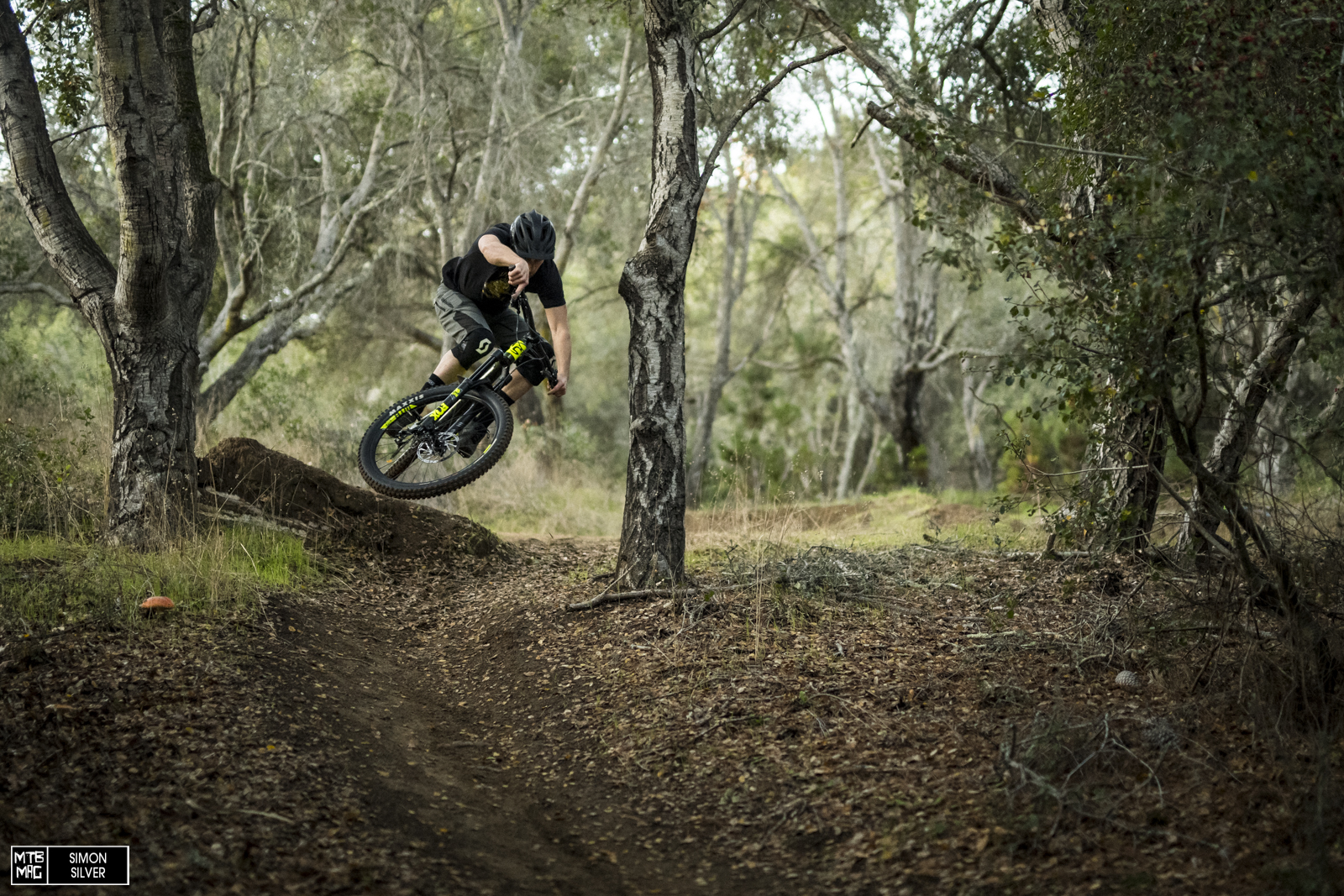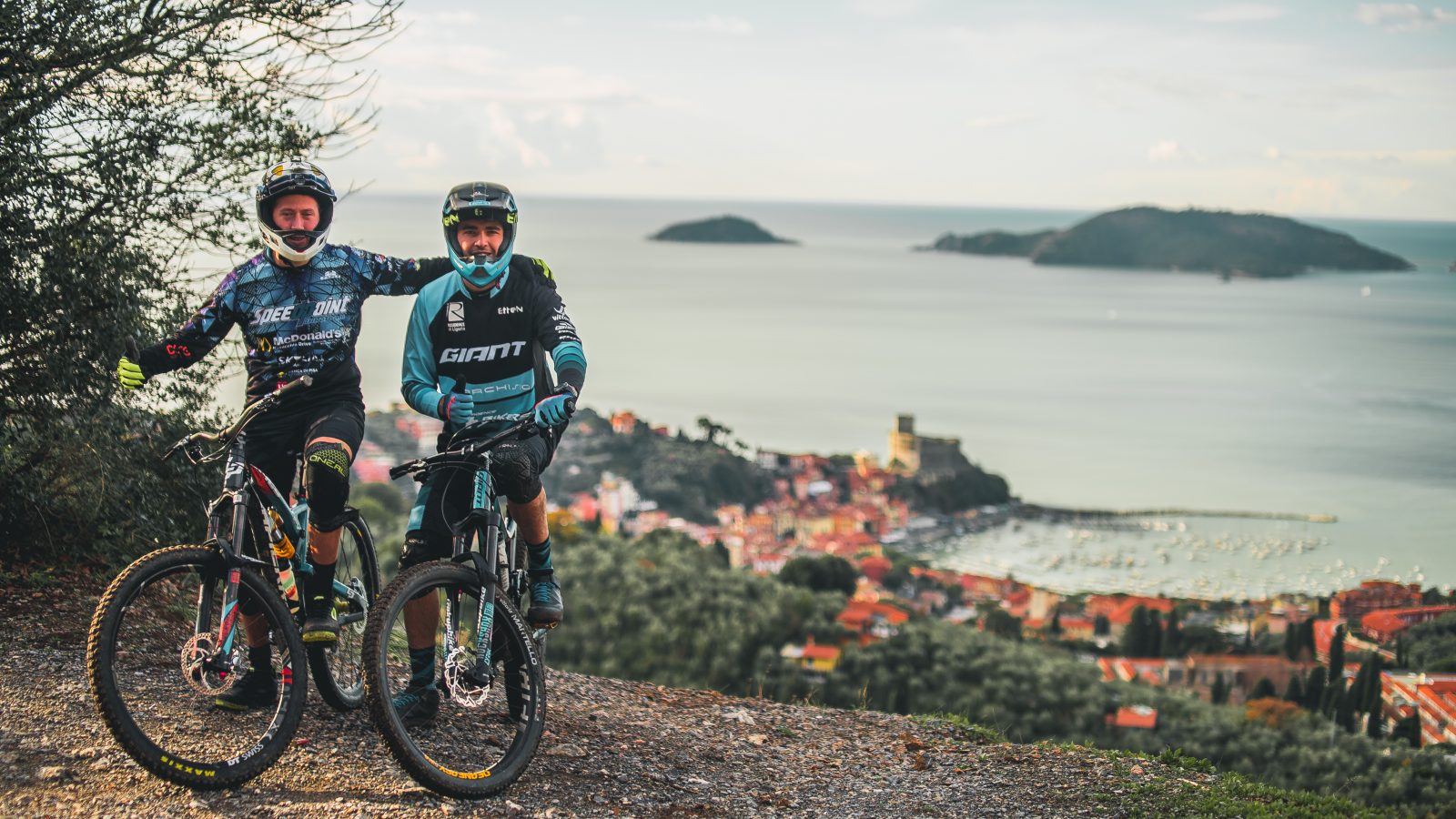I’ve got to admit…In the past, I was never really a big fan of Cannondale. It started out when I was a kid working at a bike shop that carried them. In my opinion, a great deal of their efforts were different purely for the sake of being different and standing out, not necessarily different because said efforts brought about measureable improvement. The brand has been behind some interesting innovations over the years, but past efforts such as 4-bolt brake rotors were just flat out stupid. But hey…maybe I’m just childish for holding a grudge and being apprehensive. Anyhow, fast forward almost two decades and I must admit that I’ve changed my tune dramatically.

Roughly speaking, with regard to pivot points, linkage and frame layout, the new Jekyll shares a loosely similar architecture to the old Jekyll. You know, the one that had the highly unnecessary pull shock. Well, Cannondale got smart and realized that it’s better off for everyone to just use a normal shock. More importantly, they dialed in some cool features on the frame and boldly pushed the envelope from a geometry standpoint. Hiring former RockShox guru Jeremiah Boobar and developing the bike with Jerome Clementz most certainly deserves the tip of a hat. They also added “Hustle & Flow” – on mellower trails, with the flick of a bar mounted lever, you can limit your rear shock travel to 130mm from 165mm. They had to sneak something unconventional in there! Anyhow, here’s how their mid level spec’d Jekyll 2 has been treating me over the last few months.
Details & Specs
- Carbon Fiber front triangle / Aluminum rear triangle
- 170mm travel / 165mm rear travel
- Hustle & Flow adjusts between 130mm & 165mm via bar mounted remote
- Boost hub spacing
- Metric shock spacing (230mm X 60mm)
- ISCG-05 chainguide mounting interface
- PressFit30 bottom bracket
- S, M, L, XL sizing
- $5,999.99 US
- 30.1 lbs.

The internal routing is nicely laid out so as to avoid rubbing on the frame. On the trail it also proved to be noise free. The cables and hoses enter at the headtube and exit the downtube near the bottom bracket, then run externally. The link that drives the shock is fully carbon fiber as is the downtube protector. The drivetrain has a 3mm offset to it which allows for less dish at the rear wheel. More on that later…

The Jekyll 2 features an Eagle X0 drivetrain with Descendant carbon cranks. The bike came with a 30T chainring which I felt was at least one size too small. I swapped it for a more suitable 34T (pictured)…A standard sized water bottle fits nicely on the seat tube where it is easily accessible and well protected from dirt. If you run a right/left specific bottle cage, you’ll need the opposite of what you’d put on your downtube.

The 130mm Hustle & 165mm Flow modes are enabled via a Fox Gemini rear shock. When you toggle to the short travel setting, you are essentially closing one of two air chambers to limit the shock’s travel.

The Fox 36 Performance Elite is identical to the Fox 36 Factory, minus the Kashima coating on the stanchions. It has 170mm of travel and features 3-position lever for open, trail and lockout as well as low speed compression and rebound.

The Fabric saddle is no frills with clean lines and a nice curve to the nose. The wheels are 29mm inner diameter WTB Frequency i29 rims laced to SRAM 900 series hubs. The SRAM Guide RS brakes feature adjustable reach and are paired with 200mm/180mm Centerline rotors. Both the frame and fork feature plenty of clearance for the rather wide 2.5″ Maxxis Minion DHF front and 2.4″ Minion DHR II rear tire.

Up front, Cannondale spec’d a 780mm wide, in-house carbon fiber bar with a 35mm long, in-house stem. Both bits are 31.8mm. The grips that came on the bike failed to impress, so I installed my go-to Sensus Lites.

Last but not least, the M-XL bikes feature a 150mm travel Race Face Turbine dropper seatpost with a 1X style lever. The size small Jekyll features a 125mm travel post. The Gemini shock lever and dropper lever managed to get along decently. I feel that better integrated setups are possible, although I still haven’t seen a dropper lever and bar mounted lockout/travel adjustment combo that has impressed me yet with regard to ergonomics and dexterity.
Geometry
Cannondale made some rather substantial changes to the Jekyll’s numbers. They jumped on the long, low and slack trend without going overboard. They opted for a long front end paired with very short chainstays. In fact, outside of dirt jump and slopestyle bikes, at 420mm, the Jekyll has the shortest chainstays of any bike I’ve ever ridden.

The head tube angle comes in at a fairly slack 65º which is pretty standard for the long travel enduro category. One element that’s a bit less common but was warmly welcomed is the Jekyll’s 75º seat angle. More manufacturers could certainly stand to take note of this and follow suit. Strictly from a body position standpoint, bikes with steeper seat angles climb better as they make it easier to get your weight forward while seated. That said, pedaling efficiency from a kinematics standpoint is another matter altogether and varies with design. Anyhow, rounding things off, the 8mm BB drop is nothing shocking…there are bikes further pushing the limits and scraping the ground, but I wouldn’t consider the Jekyll to have a “high bottom bracket” by any means.
First Impressions/Setup
Generally speaking, when I first get on a new long term bike, I’m apprehensive about contact points such as saddle, grips and pedals (if applicable)…I can be a bit finicky about handlebar width and stem length as well as they affect weight distribution and where you sit fore and aft on the bike. Considering everyone’s body proportions vary and that we all have different preferences with regard to fit, it’s not all that uncommon to be swapping things out early on. That said, the only cockpit part that I felt compelled to change was the grips. Other than that and chainring, I mainly rode the bike bare bone stock. I did spend some time on a coil shock and after this review wraps, I’ll be comparing said shock with its air sprung counterpart, but that’s another story.

Overall, everything built up nicely. Aside from the 3mm offset drivetrain, the bike didn’t have anything too peculiar about it. To shed some light on that, if you were to upgrade wheels or have to swap one out, with a standard 148mm Boost wheel, you’d need to re-dish the wheel. I tried this with a set of wheels that I’m currently testing and it was about a 7 minute job. It took about 2 full turns of tensioning the non-drive side and 2 full turns of de-tensioning on the drive side. Basically, unless you’re not a very confident mechanic, it’s nothing more than a minor hassle. Last but not least, after my first quick ride I added a volume reducer to both front and rear shocks.
On the Trail
Most good rides start with a climb so I’ll start there. As I mentioned prior, the 75º seat angle puts you in a really good position and makes it easy to get your weight up over the front. As someone with really long limbs, I especially appreciated this. With a ~34″ inseam, on bikes with really lax seat tube angles in particular I get put way too far back on the bike. This wasn’t the case on the Jekyll and it was really, really refreshing…especially given that it’s a long travel bike.

The short chainstays also help to provide increased traction on the steepest sections. It was a bit overwhelming keeping track of Open, Trail and Lockout modes on the rear shock, as well as dealing with the bar mounted lever that toggled between travel modes, and the dropper post. If I was going to just sit and grind up a long fire road climb, I opted for the very firm, fully locked mode on the shock. For general up/down trail riding and quick punchy climbs, the Jekyll was efficient enough once it was in the short travel/open mode. From a kinematic standpoint, the bike didn’t exhibit that much bob, so despite the added complications to the cockpit, quickly switching to short travel was definitely nice at times.

Once the Jekyll was pointed downhill, it came to life. There is a lot to unpack with this bike, but from a geometry standpoint I really liked the numbers. Full disclaimer, I’m a fan of bikes with short chainstays, long front ends and short stems. What’s interesting about the Jekyll is that it pushes the boundaries of front center/rear center proportionality to the extent that one might even think that it has gone too far, but in reality it doesn’t. If you’re a high level enduro racer shredding blind terrain, you might want longer chainstays for a bit more stability, depending on your personal preferences. But keep in mind, this bike was developed by Jerome Clementz, a former EWS world champion. Most riders will be quite stoked with the short rear end/long front end combination. Overall, the bike is a blast in tight, slappy turns and its very comfortable in the air, so if you often frequent the bike park, it’s right at home.

Getting into the suspension end of things, what’s really important to me is leverage rate and suspension curve. In terms of rate, at 2.75:1 the Jekyll sits in the middle of the road. I found the curve to be just right. The bike is light off the top, supportive in the mid stroke and fairly resistant to bottoming. Should the choose, enduro racers have the option of setting up the rear suspension to feel more linear so it will gobble up successive mid to large sized hits nicely. I spent time on the Jekyll with a coil sprung shock and it still had offered plenty of support. In this day and age, a bike that plays nice with both coil and air shocks is harder to come by than it should be. That said, I fully commend Cannondale for those efforts as it gives the end user a lot more options. In terms of durability, aside from the occasional check of pivot bolts, I had zero hardware issues.

In terms of how well the components performed, the Jekyll 2 had a good spec overall. The Eagle X0 drivetrain was flawless, as expected. The Guide RS brakes were problem free and offered ample power. Two small gripes with them are the lack of a contact point adjustment, and the fact that the lever blades don’t pivot on bearings, but instead on bushings. There were no problems in the duration of the test, but over time some play could develop. The Race Face Turbine post was no frills. It uses the brake from the 9point8 post I tested to great success some time ago. The 1X style lever had nice ergonomics and smooth action. I had no major gripes with the rest of the cockpit and controls. The handlebar, stem and saddle are straightforward in house bits, but they got the job done.

The FSA/SRAM wheels are utilitarian – a predictable choice for a mid level spec’d bike. You can’t expect flagship bike with carbon fiber wheels at $6,000, unless you’re looking at a consumer direct brand. Even then, it’s tough to find. Regardless, the engagement was fast enough, and the rim width paired well with the 2.5″ front/2.4″ rear tires. Maxxis Minion DHF/R are a proven combo and the wide ish 29mm inner diameter rims supported the fairly wide tires nicely. While some brands are pushing what I’d call “not quite plus” tires, I can see the advantage of wider tires, but this is about as wide as I’d recommend going on a bike that you have to pedal back up the hill….Especially if you ride muddy or rutted trails where you want more bite and less float. Last but not least, the Fox 36 Performance Elite was great. It offered plenty of adjustment and with a bike this burly, I appreciated that the lock out position was a full lock out. Some may lament the lack of the gold “Kashima” coating on the stanchions, but I’d love to see the results of a blind test comparing the two forks back to back. I’d wager my money that no one could really tell the difference between the two stanchions.
Overall
What really swept me off of my feet with this bike was its handling and the suspension. It corners and manuals incredibly well thanks to the short chainstays. Speaking of stays, the flagship Jekyll boasts carbon fiber seatstays & chainstays over the aluminum stays featured on the Jekyll 2 in test. Although I’d love to try that frame for comparison’s sake, I have no complaints with regard to stiffness or liveliness. Jumping it was a treat as the suspension is lively and offers loads of pop. In the rough bits, the Jekyll strikes a nice balance between mid-size bump absorption capability and mid-stroke support. A deeper look reveals a bike which manages to get back up the hill surprisingly well while boasting the benefit of reduced travel on those sections/trails/days where 165mm of travel is just too much. That greatly broadens the Jekyll’s versatility, but as someone who’s admittedly neurotic and minimalist, I’ve got mixed feelings about the extra lever/cable/fussing that comes along with the “Hustle & Flow” modes. With that in mind, I certainly can’t deny its utility. If it’s something that bothers you, it can easily be removed, but having the option is quite nice.
Above, I mainly touch on the bike’s personality, but what’s also important is value. These days, with the emergence and inevitable rise of consumer direct brands, it has become tougher and tougher to gauge this versus that style comparisons. For me personally, this bike ticked all of the boxes and while $6,000 isn’t cheap by any means, the Jekyll 2 boasts good value. With any non-flagship bike, there will be a couple of parts that you won’t be inclined to write home about, but overall, the Jekyll 2 has a foolproof spec that took a beating without flinching. At the heart of it all, I really loved what matters most – the frame. Hats off to Cannondale on one hell of a comeback.







